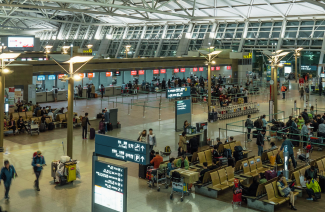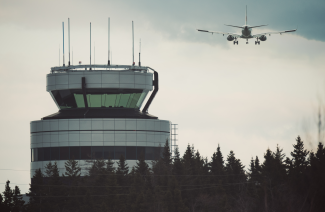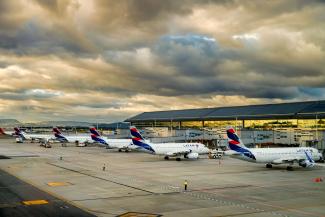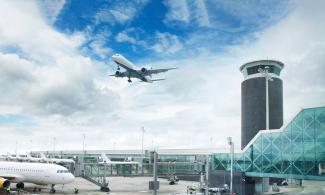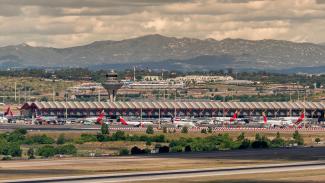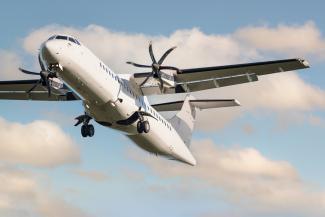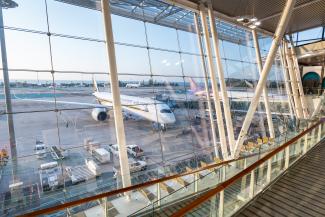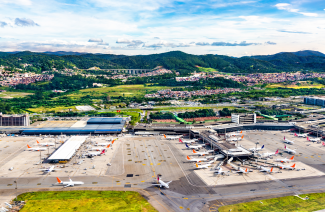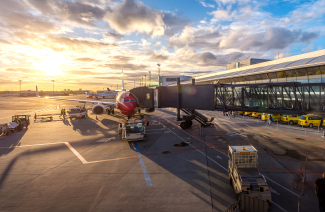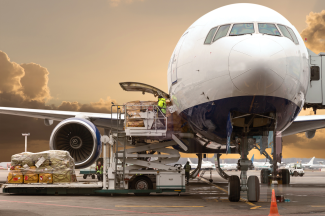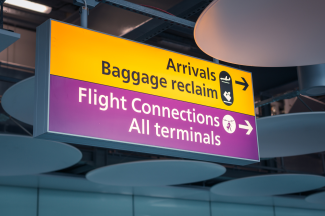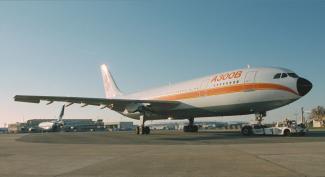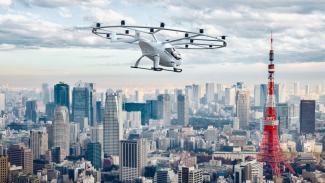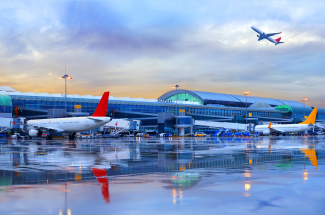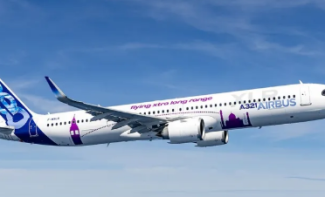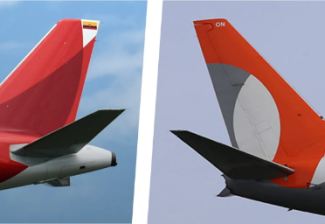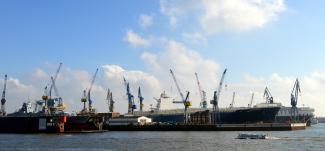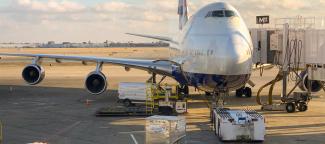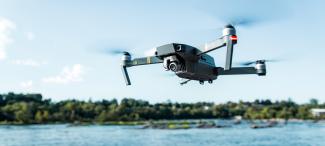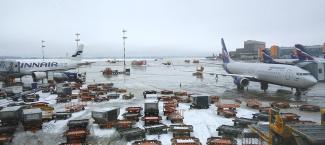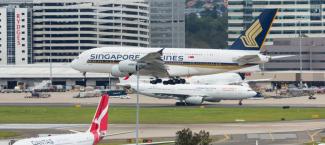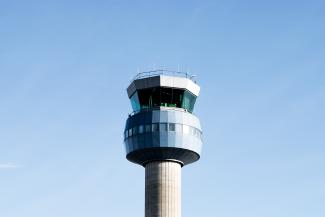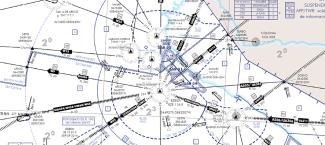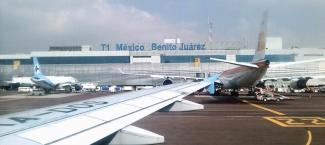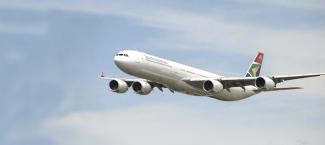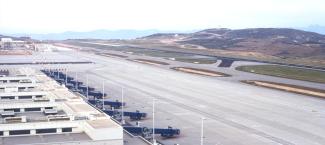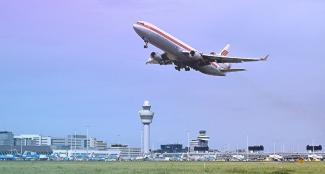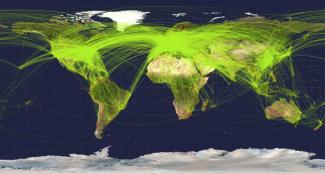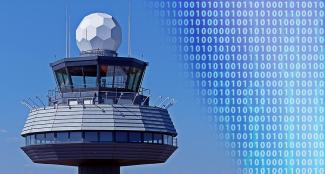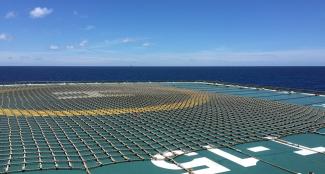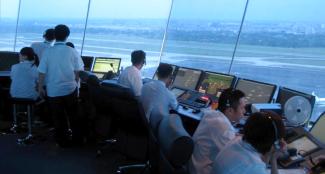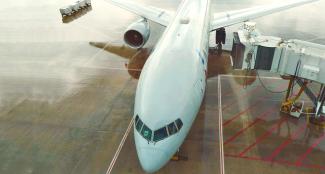Air traffic in Europe is recovering at fast pace from the pandemics shout-downs, having achieved in September 2023 the 91% of pre-COVID flight numbers in Europe (+11% vs. September 2022), in line with the EUROCONTROL forecast1.
As the air traffic demand is growing, the well-known issue of delays has started again to generate displeasure among passengers and thus gaining the attention of the media. In particular the ATFM delays caused by constraints on the en-route phase of flights are interesting to analyse, as they reveal the limits of Air Traffic Control (ATC) infrastructure on the ground.
What is an ATFM delay?
The mechanism is quite straightforward: when the European Network Manager (EUROCONTROL) foresees an imbalance between air traffic demand and airspace capacity somewhere in the EU skies, it starts rationing departures by delaying their take-off time at the gate with engines off, to keep the airspace manageable and minimise emissions. Any frequent traveller might have heard the gloomy announcement from the cockpit: “we are ready for departure, but we have an ATC restriction and we will be moving in X minutes”. This delay in fact is typically announced to passengers after completing the boarding procedures, when doors are closed and the aircraft is ready to go. This is not for any particular sadism, but rather to ensure that a “regulated” flight is ready to depart and therefore it becomes a candidate to escalate in the virtual queue at any time, getting an improvement to reduce its final actual delay.
There are many root causes that can limit the en-route airspace capacity, which can be analysed through the delays code which are recorded by EUROCONTROL as presented in Figure 1 below:
- Before pandemics the system was already operating very close to its capacity limits, in fact the majority of delay was declared as “ATC capacity”, meaning that despite the full availability personnel and the activation of airspace configurations guaranteeing the maximum capacity, the demand was too high. The problem was exacerbated by increasingly strong weather phenomena during summer months (Jun-July-Aug) and evolved into important “industrial actions ATC” at the end of 2019 and the beginning of 2021, testifying important social unrest by Air Traffic Controllers (ATCOs) at that time.
- During pandemics all the structural constraints were relaxed and only a few sporadic delays were happening (Mar20-Jun21). Summer 2021 was again providing signals of shortages in capacity, both on the structural side (“ATC capacity” delays) and on the human resources side (“ATC staffing” delays) coupled with the usual weather-related disruptions.
- After pandemics with the rise of air traffic demand again during spring 2022, the airspace capacity wall was made of the usual ATC capacity and staffing bricks and reinforced with personnel shortages at the main hubs, where the cuts on staff occurred in previous years was not compensated by equally rapid hirings in view of the traffic demand recovery (“Special events” delays)
- Early in 2023 it was the French labour unions rising the airspace capacity wall (“Industrial actions ATC” delays) to an height never seen before.

Figure 1: En-Route ATFM delays evolution (Source: EUROCONTROL Aviation Intelligence Portal; ALG analysis)
How do delays propagate?
ATFM Delays have the nasty characteristic of rapidly spreading around the air traffic network, due to the tight aircraft rotations. So, a handful of minutes on the first aircraft leg in the morning, can easily turn into hours at the end of the day, due to the limited buffers built into schedules and the multiplying factors such as passengers’ connections and flight crew availability.
The size of the airspace affected and its centrality to the European network are the main sensitivity factors. This appears evident when looking at the delays caused by the strikes of French Air Traffic Controllers in March and April 2023, which were affecting 1 out of every 3 flights operated in the EU area3.

In a pursuit to fly around the problematic area and to avoid the cancellation, many airlines opted to reroute around the French airspace, thus in turn causing congestion in the airspace of neighboring countries, that were already operated close to their maximum capacity, thus causing massive disruptions to all European air traffic.

Figure 3: Impact of ATC strikes in France between 1 March and 9 April 2023 (total minutes of delay per Country imputable directly to the ATC industrial action).
What can be done to improve the situation?
The operational and environmental impacts of ATC strikes in 2023 are impressive and exceeding by far any similar event in the last years, calling to immediate actions by authorities to find a regulatory solution to avoid as much as possible these intentional causes of delays, while the industry works on the validation and deployment of the technical solutions, aimed at increasing the structural capacity of the system under a Digital European Sky through the SESAR Program.
A regulatory approach would be aimed at imposing minimum service levels in all EU Member States for all public services, including overflights in the scope of the regulation as is already the case in Italy and Greece. This approach has been advocated by Ryanair for many years and has been lately analysed through simulations by EUROCONTROL. It would entail limiting the duration of the strike to 4-6 hours, requesting the cancellation of flights to/from the concerned state, while allowing inter-continental arrival/departures and other types of flights (e.g. territorial continuity).
This might have the drawback of cancelling for a limited period of time flights to/from France but would outer perform, from a network perspective, at least the other seven scenarios analysed by EUROCONTROL5 . Whilst the right to strike is enshrined in the EU Charter on Fundamental Rights, the right of EU citizens to freely move is equally (or even more) important as established in the Treaty on the Functioning of the European Union, so a balanced and proportional approach should be fostered in 2024 to make Europe the most efficient and environmentally friendly sky to fly in the world!
References:
1 EUROCONTROL STATFOR Baseline scenario forecast, NM monthly network operations report, EUROCONTROL, September 2023, EUROCONTROL Aviation Intelligence Portal.
2Air Traffic Control (ATC)
3 Based on EUROCONTROL AIU, “Impact of strikes on European Aviation”, 18 April 2023
4 Ryanair EU Passenger Petition, 2023
5 EUROCONTROL Impact of ATM related strikes on the European ATM network, 16 October 2023

